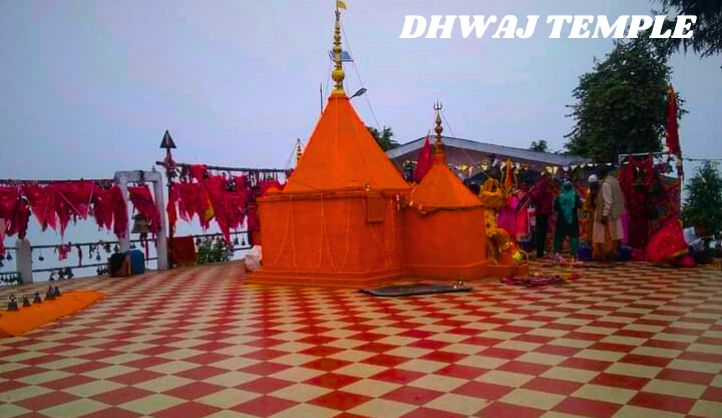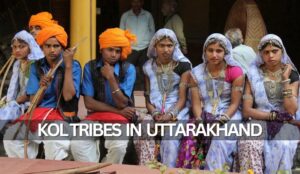Nestled in the serene and picturesque landscapes of Uttarakhand, the Dhwaj Temple is a beacon of spirituality and natural beauty. Located in Pithoragarh, a quaint town often referred to as ‘Mini Kashmir,’ this temple is not only a significant religious site but also a popular destination for nature enthusiasts and trekkers. With its rich history, captivating mythology, and breathtaking surroundings, the Dhwaj Temple offers a unique experience that transcends the ordinary.
Historical and Significance
The Dhwaj Temple, also known as Dhwaj Mandir, is dedicated to Lord Shiva and Goddess Jayanti. The temple is steeped in mythology and ancient lore, making it a sacred site for devotees. According to local legends, the Pandavas from the epic Mahabharata visited this site during their exile. The temple’s history is intertwined with stories of divine interventions and miracles, adding to its mystical allure.
One of the most compelling legends associated with the Dhwaj Temple is that of Lord Shiva’s victory over the demon Shumbh-Nishumbh. It is believed that this site marks the spot where Goddess Jayanti, an incarnation of Goddess Parvati, helped Shiva in vanquishing the demon. The name ‘Dhwaj’ itself means ‘flag,’ symbolizing victory and the triumph of good over evil. This historical and mythological context enhances the temple’s spiritual ambiance, drawing devotees to seek blessings and solace.
Architectural Marvel
Perched at an altitude of approximately 2,100 meters, the Dhwaj Temple is an architectural marvel. The temple’s design reflects traditional Kumaoni architecture, characterized by its simplistic yet elegant structure. Built with local materials such as stone and wood, the temple seamlessly blends with its natural surroundings. The sanctum sanctorum houses idols of Lord Shiva and Goddess Jayanti, adorned with flowers and traditional ornaments.
The temple’s architecture is not only a testament to the region’s cultural heritage but also showcases the ingenuity of ancient craftsmen. The intricate woodwork, stone carvings, and the use of natural elements highlight the harmonious relationship between spirituality and nature. The temple complex also includes a courtyard where devotees gather for prayers and rituals, further enhancing the sense of community and devotion.
How to Reach Dhwaj Temple
By Air
The nearest airport to Pithoragarh is Pantnagar Airport, located approximately 200 kilometers away. From Pantnagar Airport, you can hire a taxi or take a bus to Pithoragarh. The drive offers picturesque views of the Kumaon region, taking you through lush green valleys and quaint hill towns.
By Train
The nearest railway station is Tanakpur, situated around 138 kilometers from Pithoragarh. Alternatively, Kathgodam Railway Station, located about 212 kilometers away, is also a convenient option.
By Road
Pithoragarh is approximately 150 kilometers from Haldwani. Regular buses and taxis are available from Haldwani to Pithoragarh.
Journey to Dhwaj Temple
Reaching the Dhwaj Temple is an adventure in itself. The journey begins from Pithoragarh town, from where visitors embark on a trek of about 4 kilometers. The trail leading to the temple is a blend of rugged paths, dense forests, and panoramic vistas of the surrounding valleys. As trekkers ascend, they are greeted by the cool mountain breeze and the soothing sounds of nature.
The trek is moderately challenging, making it suitable for both seasoned trekkers and beginners. Along the way, trekkers can witness the region’s diverse flora and fauna, including rare Himalayan species. The sight of colorful rhododendrons, chirping birds, and occasional glimpses of wildlife adds to the trek’s allure. The journey to the temple is not just a physical ascent but also a spiritual one, with each step bringing a sense of peace and fulfillment.
Best Time to Visit
The ideal time to visit the Dhwaj Temple is from April to June and September to November. The pleasant weather during these periods makes the trek and temple visit comfortable. The monsoon season (July-August) can make the trek challenging due to heavy rainfall, while the winter months (December-February) can be extremely cold with snowfall in the higher regions.
Spiritual and Cultural Practices
The Dhwaj Temple is a vibrant center of spiritual and cultural activities. Throughout the year, the temple hosts various religious festivals and ceremonies, attracting devotees from far and wide. One of the most significant events is the annual fair held during the auspicious month of Sawan (July-August). During this time, the temple is adorned with decorations, and the air is filled with devotional songs and chants.
Devotees participate in rituals such as Abhishekam (ritual bathing of the deity), offering of flowers, and lighting of incense sticks. The temple priests conduct special prayers and aarti (ritual of worship with lights) to invoke the blessings of Lord Shiva and Goddess Jayanti. The vibrant cultural performances, including traditional Kumaoni music and dance, add to the festive atmosphere, creating a sense of joy and communal harmony.
Natural Beauty and Serenity
One of the defining features of the Dhwaj Temple is its breathtaking location. Surrounded by lush green forests and towering mountains, the temple offers a panoramic view of the majestic Himalayan ranges, including peaks like Nanda Devi and Panchachuli. The serene environment and the pristine beauty of nature make it an ideal spot for meditation and introspection.
Visitors often find solace in the tranquil surroundings, away from the hustle and bustle of urban life. The sound of rustling leaves, chirping birds, and the distant hum of mountain streams create a symphony of nature that calms the mind and rejuvenates the spirit. The sunrise and sunset views from the temple are particularly mesmerizing, casting a golden glow on the snow-capped peaks and filling the sky with vibrant hues.
Environmental Conservation Efforts
Given its location in a fragile Himalayan ecosystem, the Dhwaj Temple is also a focal point for environmental conservation efforts. Local communities and environmental organizations work together to preserve the natural beauty and biodiversity of the region. Initiatives include afforestation programs, waste management campaigns, and awareness drives about the importance of sustainable tourism.
Visitors are encouraged to follow eco-friendly practices, such as avoiding plastic, minimizing waste, and respecting the local flora and fauna. These efforts not only protect the environment but also enhance the overall experience for future generations of pilgrims and nature lovers. The temple serves as a reminder of the delicate balance between human activities and nature, emphasizing the need for responsible and sustainable practices.
Accommodation and Facilities
To cater to the influx of pilgrims and tourists, several accommodation options are available in and around Pithoragarh. These range from budget guesthouses to mid-range hotels, offering comfortable stays with basic amenities. Some accommodations provide stunning views of the surrounding mountains and valleys, allowing visitors to immerse themselves in the region’s natural beauty.
In addition to lodging, there are facilities for dining, with local eateries serving traditional Kumaoni cuisine. Dishes such as Aloo Ke Gutke, Bhatt Ki Churkani, and Gahat Dal are popular among visitors, offering a taste of the region’s culinary heritage. The warm hospitality of the local people adds to the overall experience, making visitors feel welcomed and cherished.
Nearby Places to Explore
Exploring the vicinity of Dhwaj Temple in Pithoragarh offers visitors a rich tapestry of natural beauty, historical significance, and cultural heritage.
Pithoragarh Fort
Also known as Gorkha Killa, Pithoragarh Fort is perched on a hilltop, providing panoramic views of the surrounding valley. Built in the 18th century by the Gorkhas, it is a site of historical importance and offers a glimpse into the region’s past.
Askot Wildlife Sanctuary
This sanctuary is a haven for wildlife enthusiasts and nature lovers. Spread over an area of around 600 square kilometers, it is home to various species of flora and fauna, including the elusive snow leopard, Himalayan black bear, and musk deer.
Kapileshwar Mahadev Temple
A cave temple dedicated to Lord Shiva, Kapileshwar Mahadev Temple is situated in a scenic location amidst dense forests. The cave’s natural beauty and spiritual ambiance make it a serene spot for meditation and reflection.
Thal Kedar Temple
Another important Shiva temple, Thal Kedar is located at an elevation of 2,100 meters. It is a significant pilgrimage site, especially during the festival of Shivaratri. The temple is surrounded by lush greenery and offers splendid views of the Himalayas.
Nakuleshwar Temple
Dedicated to Lord Shiva, this ancient temple is known for its intricate stone carvings and architectural beauty. It is believed to be built during the Gupta period and holds significant historical and religious value.
Jhulaghat
Located on the Indo-Nepal border, Jhulaghat is known for its hanging bridge over the Kali River. The site offers a unique cultural experience as you can walk across the bridge and explore the Nepalese side.
Chandak
A small hilltop offering breathtaking views of the Himalayan ranges, Chandak is a popular spot for trekking and paragliding. The lush green landscape and tranquil environment make it a perfect escape for nature lovers.
Nagmandir
Situated in Berinag, Nagmandir is dedicated to the serpent god, Nag Devta. The temple is located in a serene setting and is a revered site for locals who come to offer prayers and seek blessings.
Patal Bhuvaneshwar
A mystical cave temple dedicated to Lord Shiva, Patal Bhuvaneshwar is an underground cave complex with fascinating rock formations and mythological significance. It is said to be connected to several other caves within the Himalayas.
Conclusion
The Dhwaj Temple in Pithoragarh is more than just a religious site; it is a sanctuary of peace, spirituality, and natural beauty. Its rich historical and mythological significance, stunning location, and cultural vibrancy make it a must-visit destination for pilgrims and travelers alike. The journey to the temple, the experience of the divine presence, and the immersion in nature’s splendor create a profound and lasting impact on all who visit.
Whether you seek spiritual solace, an adventurous trek, or a retreat into nature’s embrace, the Dhwaj Temple offers an experience that is both enriching and transformative. It stands as a testament to the enduring power of faith, the beauty of nature, and the importance of preserving our cultural and environmental heritage for future generations.
FAQs about Dhwaj Temple
1. What is the Dhwaj Temple and where is it located?
Dhwaj Temple is a sacred Hindu temple dedicated to Lord Shiva and Goddess Jayanti. It is located in Pithoragarh, Uttarakhand, at an altitude of approximately 2,100 meters.
2. What is the significance of the Dhwaj Temple?
The temple is historically and mythologically significant, believed to be the site where Lord Shiva and Goddess Jayanti defeated the demon Shumbh-Nishumbh. It is a place of worship and spiritual solace for devotees.
3. How can I reach Dhwaj Temple?
To reach Dhwaj Temple, you can travel to Pithoragarh by road from nearby cities. From Pithoragarh, the temple is accessible via a 4-kilometer trek. The nearest airport is Pantnagar, and the nearest railway stations are Tanakpur and Kathgodam.
4. What is the best time to visit Dhwaj Temple?
The best time to visit Dhwaj Temple is from April to June and September to November when the weather is pleasant. Avoid the monsoon season (July-August) due to heavy rains and potential landslides, and the winter months (December-February) due to cold and snow.
5. How long is the trek to Dhwaj Temple and what is its difficulty level?
The trek to Dhwaj Temple is approximately 4 kilometers long and is of moderate difficulty. It involves walking through dense forests and rocky paths, suitable for both seasoned trekkers and beginners.






